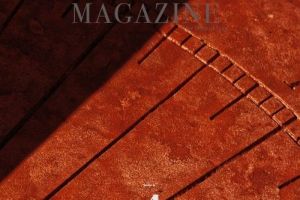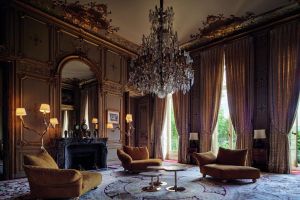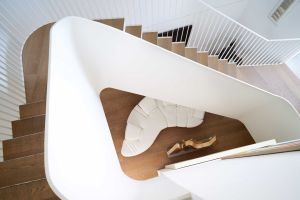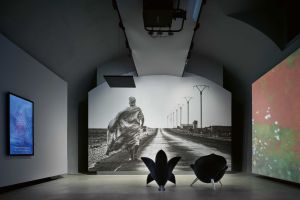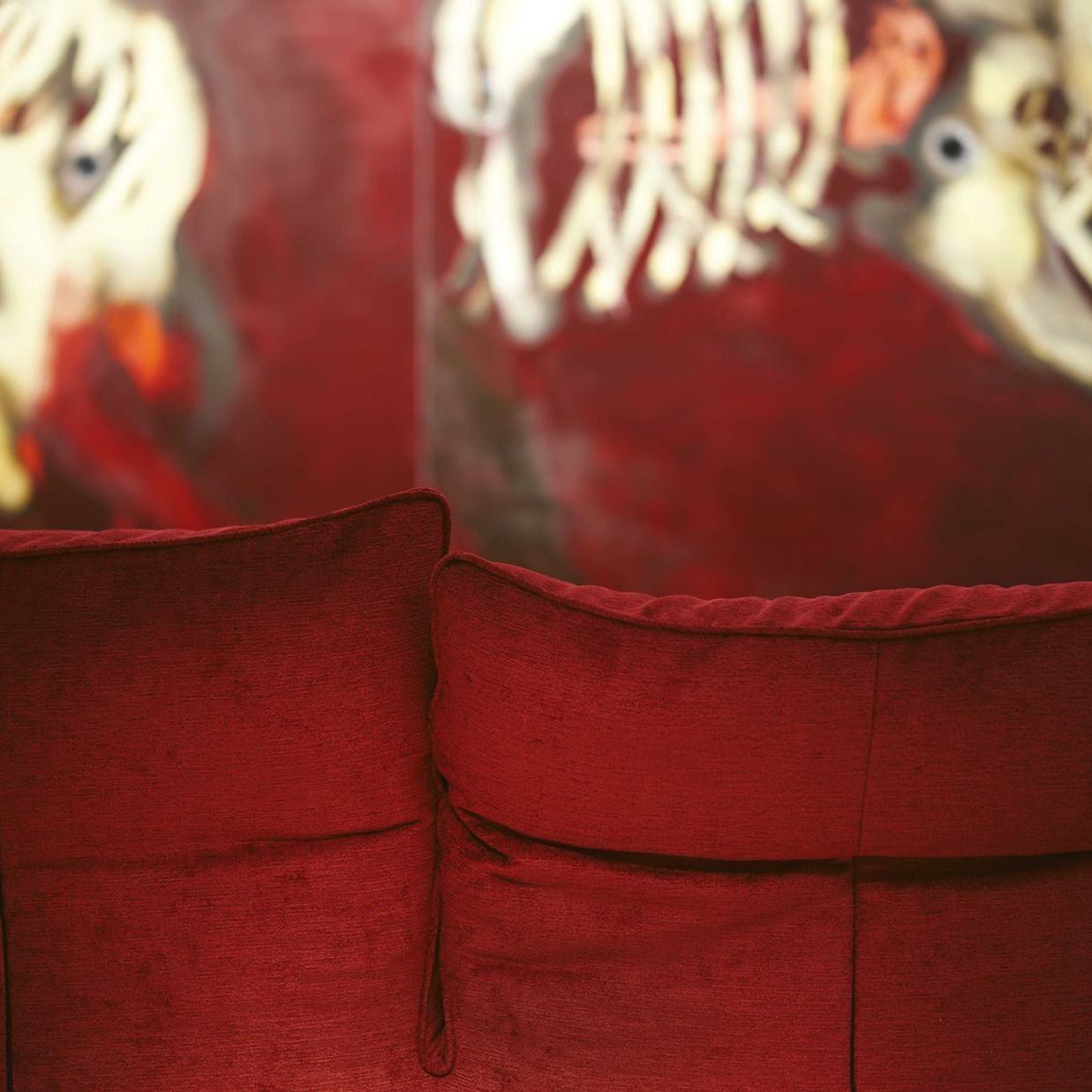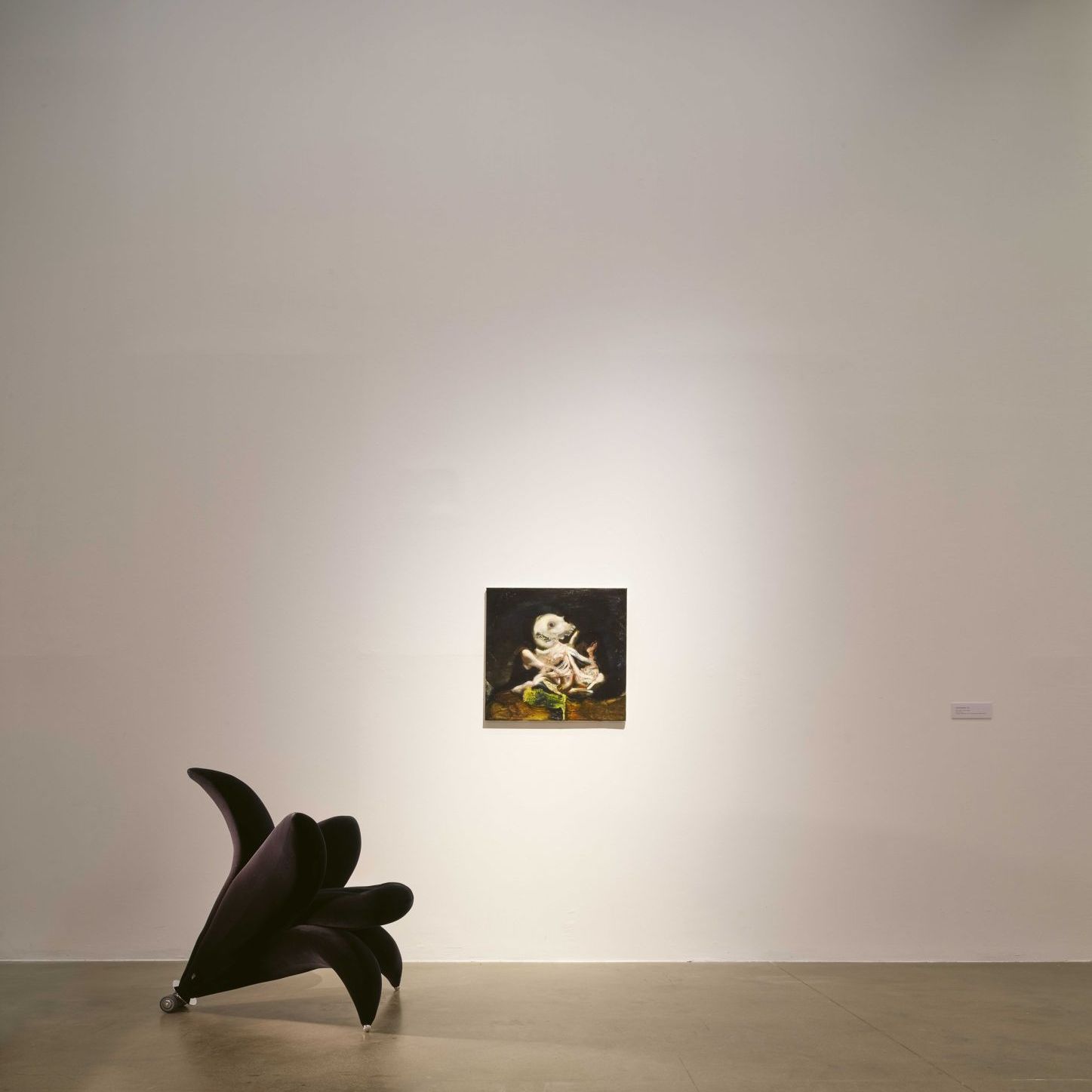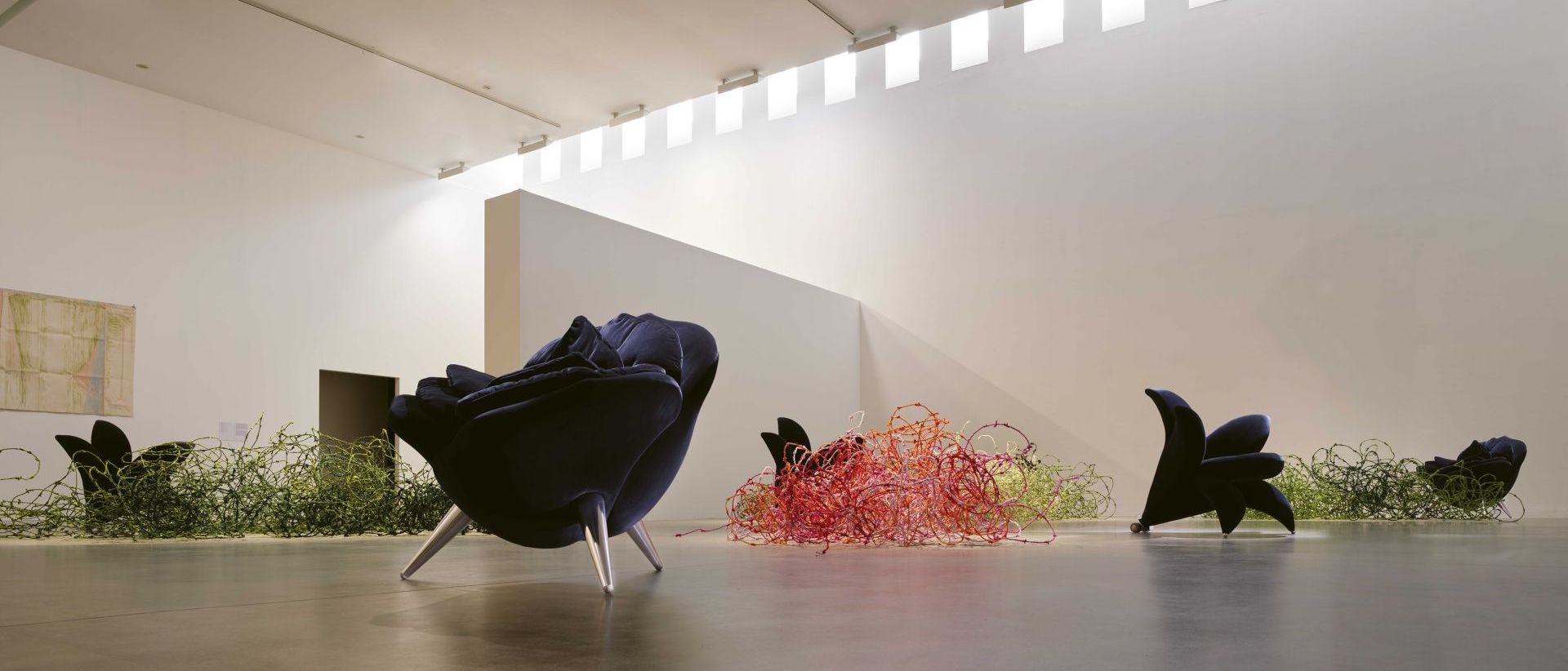
October 2023
Silvana Annicchiarico
New Patronage
Interview with Patrizia Sandretto Re Rebaudengo
For over twenty-five years the Sandretto Re Rebaudengo Foundation has been committed to promoting contemporary art and culture. Created in Turin on 6 April 1995 by its President, Patrizia Sandretto Re Rebaudengo, the Foundation is a non-profit organisation offering a new vision of patronage based on personal responsibility and sharing passions, knowledge and individual resources. Edra chose to enter the Foundation's Turin branch and dialogue with the work of young artists with its creations - through contrast and analogy, and through provoking short-circuits of meaning and disorientation. In this scenario Patrizia Sandretto Re Rebaudengo gives us greater insight into her vision of art and design, and the mission she pursues with the Foundation's work.
What is your relationship with design? What designers, trends and movements interest you most historically and in the current scene?
I could start the story of my relationship with design by telling you about two of the works in my collection. In the living room of my home in Turin a mirrored steel sofa, Europa, by designer Ron Arad sits in front of called European Culture Myth, Annunciation a wall installation by artist Tony Cragg. The first is an icon and metaphor for technology, designed in 1994. The second, created in 1984 from scraps of plastic, anticipates the themes of hyper-production, object obsolescence and the fate of waste. They both document an important season of the British arts scene, and both contain an idea of Europe. They are beautiful works but also "uncomfortable". I chose them because they are capable of maintaining a physical and mental alertness with their formal elegance.
I love Italian design, and the historical productions of authors like Albini, Caccia Dominioni, Mollino, Venini, Bellini, and research carried out by Sottsass and Memphis, Archizoom and radical design in the 1970s. In terms of more recent trends I like to be surprised by an object, and to indulge a feeling of discovery. In the design and architecture of recent years you can sense the diffused inspiration of organic forms recalling nature. I am thinking of work by Pierre Yovanovitch, Gregory Rogan, kar-studio and many others. I have also followed Alessandro Ciffo's research for many years, and collect his extraordinary soft silicone vases.
The boundaries between design and contemporary art are becoming increasingly fluid and permeable. The two disciplines often cross-pollinate and merge. Is that also true of collecting? What similarities and differences exist between collecting design artefacts and works of contemporary art?
Here at the Sandretto Re Rebaudengo Foundation we promote exchange between design and contemporary art. In recent years we have done this more specifically through ArtColLab, a project that offers young artists an opportunity to work with well-known figures in the world of fashion and design. For example the collaboration between shoe designer Nicholas Kirkwood and artist Paul Kneale led to a limited edition of three models of shoe; Stella Jean and Kenyan artist Michael Armitage created a sustainable collection of woollen sweaters, and in 2022 fashion couture brand Pieces Unique together with Ana Elisa Egreja designed a set of table mats.
Obviously there are several differences between collecting art and design but they both require the same passion, study and research.
How do you see the role of museums today? Are they still only about heritage conservation? Or do they have a more active, propulsive and interrogating role? What in your opinion is an exemplary museum?
As well as having a collection and exhibiting it an exemplary museum should create content, promote knowledge, produce new work, support and inspire creative younger generations, activate democratic dialogue, bring art closer to an increasingly wide public. Today's museum is an agora, a piazza, where we interrogate the open questions of the day through works of art and exhibitions, become more used to facing their complexities. I don't consider conservation, innovation and research to be irreconcilable, far from it. Caring about contemporary culture and cultural heritage has always meant caring for the past and investing in the future.
Does patronage still exist? What forms is it expressed in? What aims should it have?
Yes, luckily it still exists. Personally I chose to be a patron and not just a collector, and I found a way of expressing this choice in the Foundation. My patronage is strongly oriented towards younger generation of artists and takes the form of producing works, organising exhibitions, promoting residency programs and training specialists. I dedicate a similar amount of attention and resources to our visitors, with free cultural mediation services, workshops for state schools, and accessibility programs for more vulnerable people.
I feel convinced my patronage is expressed in exactly these activities, and although the Sandretto Re Rebaudengo Foundation is private it plays a very similar role to public institutions.
Curious, elegant, enterprising, visionary, explorer: what adjective describes you best?
Rather than choosing just one from the list, I'd like to add the word “grateful”. Every day I feel grateful to art. And this translates into a desire to give something back that I carry forward with passion, commitment and responsibility.
 |
Silvana Annicchiarico Architect, lives in Milan and works as a researcher, critic and teacher. She is consultant for public organisations and private companies. In the exhibitions and publications she is involved in, she deals with contemporary issues, the works of the great masters and the new names of design. From 2007 to 2018, she was Director of the Triennale Design Museum at Triennale Milano. |





